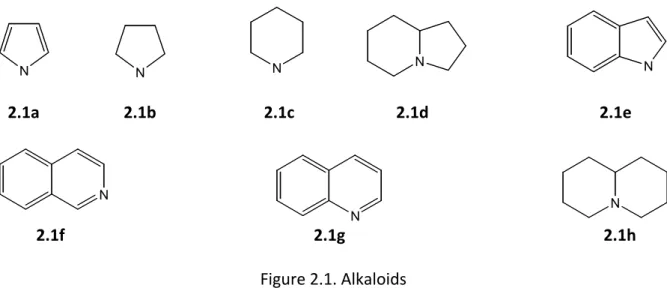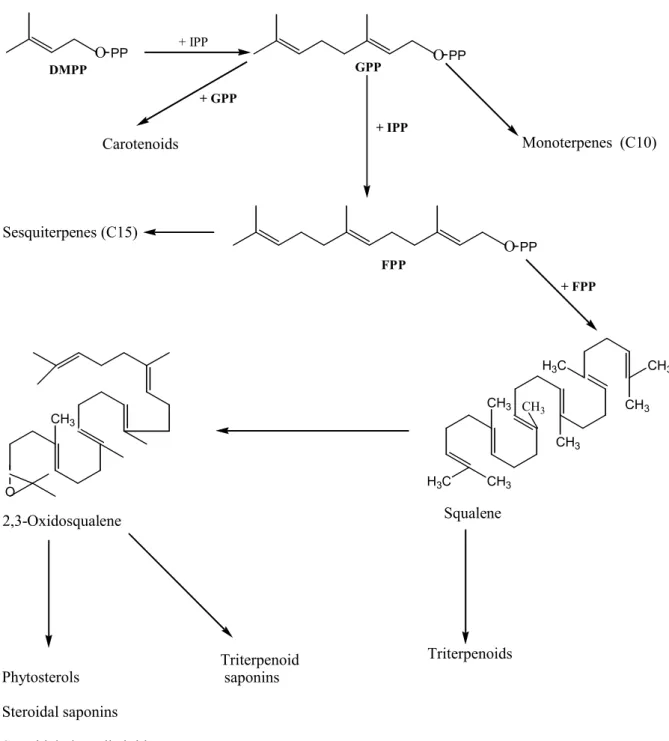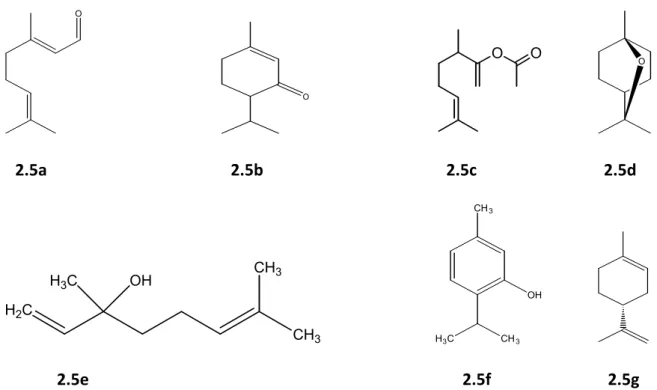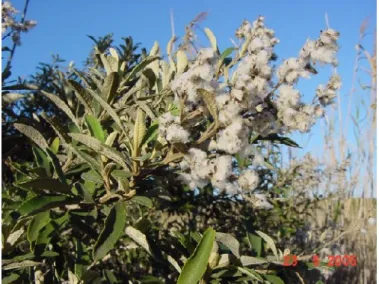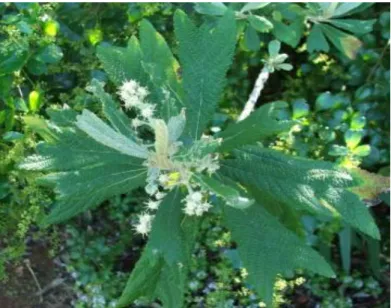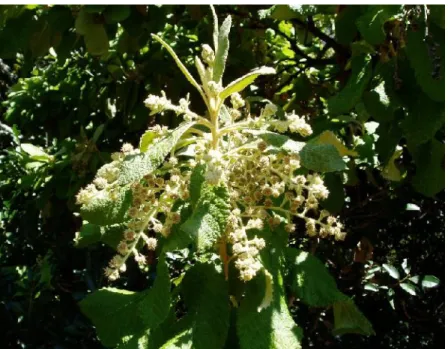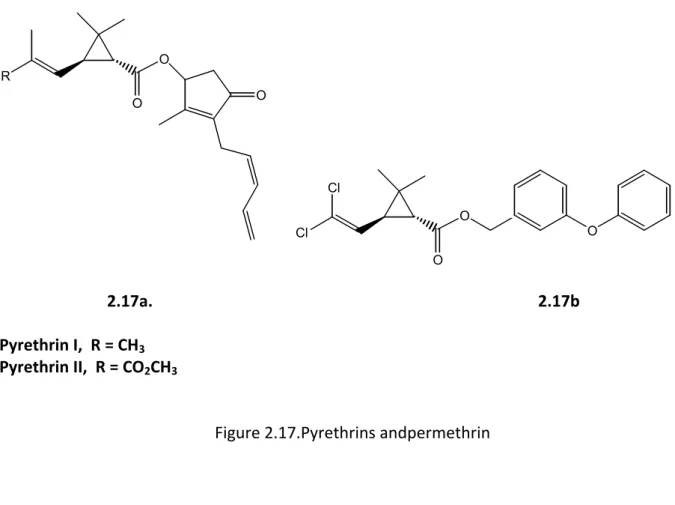Introduction
Traditional medicine
Medicinal plants
Motivation for the Present Study
Specific Objectives of the Study
To determine the larvicidal activity of volatile extracts of Tarchonanthus species against Anopheles arabiensismosquito larvae. To determine the cytotoxicity of volatile and non-volatile extracts of Tarchonanthus species using brine shrimp lethality assay and MTT assay.
34;Review of plants with CNS effects used in traditional South African medicine for mental illnesses." The effect of simulated gastrointestinal conditions on the antimicrobial activity and chemical composition of indigenous South African plant extracts.
LITERATURE REVIEW
Plant secondary metabolites
- Phenolic Compounds in Plants
- Alkaloids
- Terpenoids
- Biosynthesis of terpenoids
- Essential oils
- Triterpenoids
- Lipids
Some monoterpene and sesquiterpene structures found in essential oils and hydrocarbons such as limonene 2.5 g. The biological activities of essential oils have been attributed to the composition or specific component of the essential oil, for example: aldehydes in lemongrass (Cymbopogon citrati) have been reported to have anti-inflammatory properties45.
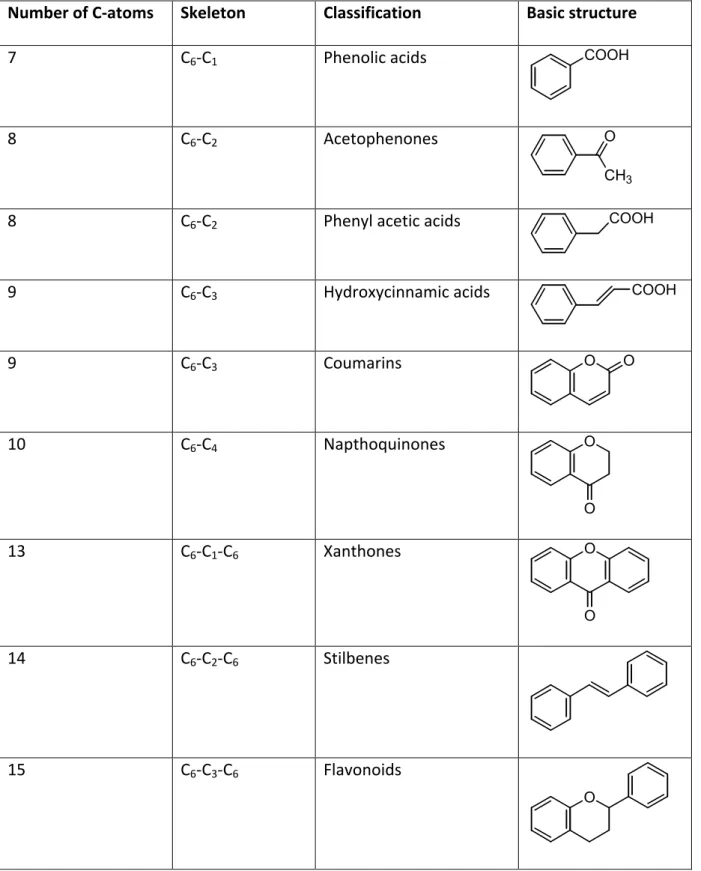
Production of secondary metabolites by plants
Tarchonanthus species
- Traditional medicinal
- Non-traditional medicinal uses of T. camphoratus
- Previous work done on Tarchonanthus species
The Maasai inhale ke from the leaves for headaches, use the infusion of dried leaves for tapeworm, the use of the leaves has various traditional medicinal uses in different societies. The leaves do not appear to be toxic as they are eaten by domestic animals such as cattle, sheep and goats, as well as game such as giraffe, gemsbok, eland, kudu, sable, blacktail, nyala, impala, springbok and gray duiker74,83. of T.
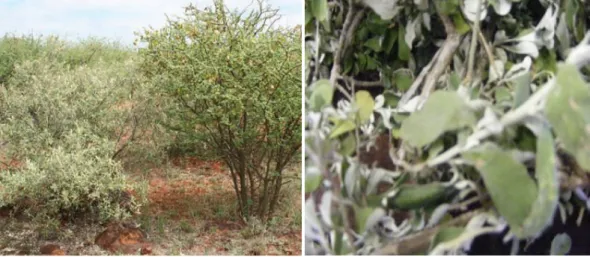
Extraction of medicinal plants
- Infusion
- Decoction
- Maceration
- Ultra sound assisted solvent extraction
- Percolation
- Microwave-assisted extraction
- Distillation
- Hydro or water distillation
- Water and Steam Distillation
- Direct steam distillation
- Hydro diffusion
- Liquid Carbon Dioxide Extraction Method
- Expression
The extraction stops when equilibrium is reached between the concentration of the metabolites in the extract and that in the plant material. Additional solvent is then poured onto the plant material and allowed to seep slowly from the bottom of the percolator. The extractables in the plant material are washed out by movement of the solvent through the plant material.
The boiling point of most essential oil components exceeds the boiling point of water and is generally between 150-3000 C, but in the presence of steam they evaporate at a temperature close to 1000 C. The principle behind steam distillation is that two immiscible liquids, when mixed, each exert a vapor pressure as if each liquid were pure108. The temperature of the steam is carefully controlled so as not to burn the plant material or the essential oil. The system is connected and low pressure steam is directed into the plant material from a boiler from the top. The oil and water are collected below the condenser in a typical oil separator.
The various components of the essential oils are released based on their manufacturers in developing countries.
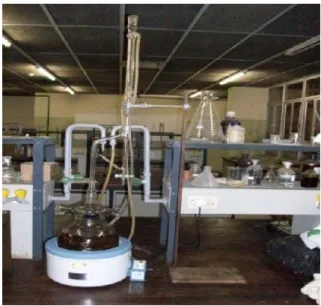
Identification of natural compounds
- Mass spectrometry(MS)
- Gas chromatography (GC)
- Gas chromatography / Mass spectrometry (GC/MS)
- Pyrolysis –Gas Chromatography/Mass Spectrometry (Py-GC/MS)
A less labor-intensive method, the Écuelle à piquer extraction method, involved placing the fruit in a rotating device with spikes that puncture the oil cells in the fruit's skin. Although the centrifugal separation takes place extremely quickly, the essential oil combines with the rest of the cell contents for some time and due to the enzymatic action, some changes in the oil may occur114. The detector detects and measures small amounts of separate components present in the carrier gas stream leaving the column.
The GC/MS has become an integral part of the analysis of chemical constituents of plant extracts. The mass spectrum of each compound detected can be taken immediately and searched for identification through thousands of mass spectra contained in the gas chromatograph/mass spectrometry computerized libraries. Pyrolysis is a technique mainly used in the analyzes of natural and artificial polymers and macromolecules.
The use of this technique in the analysis of herbal products is very limited128, but its potential is very promising.
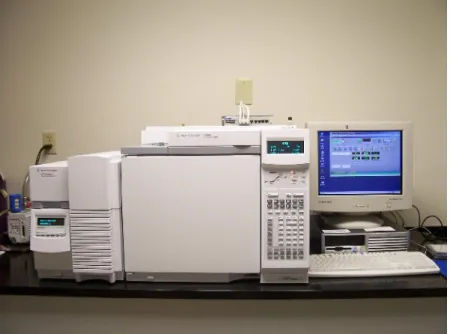
Biological activities of plant extracts .1 Antioxidant activity
- Antibacterial activity
However, these compounds have been reported to have toxic effects such as liver damage and mutagenesis, and thus their use has been restricted140. Flavonoids are considered to be one of the most powerful antioxidant groups of carbon-based phenols synthesized by plants142. Therapeutic properties of medicinal species used in folkloric medicine are often associated with their antioxidant properties due to the presence of different types of flavonoids143.
The most popular and frequently used for the determination of antioxidant activity of volatile and non-volatile plant extracts is the DPPH148 radical scavenging assay. The bleaching of β-carotene in the linoleic acid system is also a simple, reproducible and time-efficient method for the rapid assessment of antioxidant properties and has been used in many studies to assess the antioxidant potential of essential oils and plant extracts148. Scientific experiments on the antimicrobial properties of plant components were first documented in the late 19th century150.
However, factors such as volume of the inoculum, growth phase, culture medium used, pH of the media, incubation time and temperature have complicated the comparison of published data152,153.
- Insecticidal activity
- Stored-grain pests (Sitophilus zeamaisand Sitophilus oryzae L.)
- Anopheles arabiensis mosquito larvae
- Cytotoxicity
- The brine shrimp lethality assay (BSLA)
- The MTT cytotoxicity assay
Infections can cause a reduction in grain weight and quality due to endosperm feeding by larvae and adult borers. The heating of the grains also occurs, which accelerates the development of insects, which makes the goods prone to hardening, mold and even germination. The mosquito is the main vector of many vector-borne diseases that affect humans and other animals.
So, one of the ways to control mosquito-borne diseases is to interrupt the mosquito's life cycle. One of the first reports on the use of plant extracts against mosquito larvae was by Campbell et al. (1933), where plant alkaloids nicotine 2.18a, anabasine 2.18b, methylanabasine and lupinene 2.18c, (Figure 2.18), were reported to be extracted from the Russian weed, Anabasis aphylla, killed Culex sp196 larvae. Some of the essential oil compounds reported to have larvicidal activity against mosquito larvae are ocimenone 2.19a, methylchavicol 2.19b (Figure 2.20), and thymol2.5f204-206.
One indicator of a substance's toxicity is the LC50. This is the lethal dose/concentration of a substance that kills 50% of the test organisms.
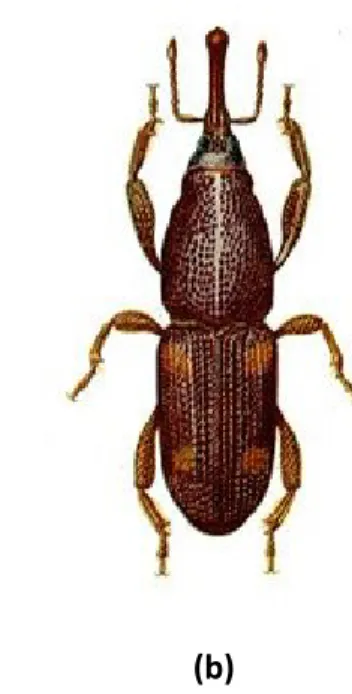
Interaction between the non-volatile and volatile fractions on the antimicrobial activity of Tarchonanthus camphoratus. Application of pyrolysis-high-resolution gas chromatography-pattern recognition to the identification of the traditional Chinese. Screening of antiradical and antioxidant activity of monodesmosides and crude extract from Leontice smirnowiituber.J Phytomed.
Fertilization caused changes in the growth parameters and antioxidant activity of medicinal plants used in traditional Arab medicine. Food and Agriculture Organization of the United Nations Agricultural Research Council and Pakistan, Islamabad, Pakistan.pp. An overview of the possibilities for biological control of invertebrate pests of stored grain in Great Britain.
Mohammad HM., Fariba S., Gholam-Reza D., Alieh A. Bioassay Screening of essential oil and different extracts of fruits of Heracleum persicum Desf.
Materials and methods 3.1 Plant collection
Preparation of the plant material
Extraction of the plant materials
- Extraction of the volatile extracts
- Extraction of the non volatile extracts
Determination of the physicochemical properties of the volatile extracts/essential oils
- Determination of the refractive index of the essential oils
Determination of the chemical constituents in the extracts
- Determination of the chemical composition of the volatile extracts/essential oils
- Gas Chromatography / Mass Spectrometer (GC/MS) analysis
- Determination of the chemical composition of the non volatile/ solvent extracts
- Phytochemical screening of the non volatile extracts
- Identification of the volatile extracts/essential oil components
- Determination of the chemical constituents of the non volatile extracts by Pyrolysis Gas Chromatography / Mass Spectrometer (Pyr-GC/MS) analysis
The initial temperature of the column was 70oC and was heated to 240oC at a rate of 5oC/min. A 1%, v/v, solution of the samples in hexane was prepared and 1 µL was injected using a split-less injection technique. Distilled water was added to the residue and 1 ml of the filtrate was treated with a few drops of Wagner's reagent.
Part of the extract was dissolved in water, after which the solution was clarified by filtration. One milliliter of distilled water was added to 1 ml of the extract and shaken vigorously. Acetic anhydride (0.5 ml) was mixed with 1 ml of sample extract and a few drops of concentrated sulfuric acid.
During the analysis, 3 mg of the sample was loaded into a quartz tube, which was inserted into a micro-furnace pyrolyzer, which was then heated from 250oC to 650oC at 5oC/ms and held at 650oC for 20 seconds.
Determination of the biological activities of the volatile and non volatile extracts
- Determination of the antibacterial activity
- Minimal Inhibitory Concentration (MIC) assay
- Determination of the antioxidant activity
- DPPH (1,1-Diphenyl-2-picryl-hydrazil) radical scavenging assay
- Nitric oxide (NO) radical inhibition assay
- Chelating effects of ferrous ions
- Total reducing power
- Statistical analysis of antioxidant results
- Insecticidal activity
- Larvicidal activity of the volatile extracts against Anopheles arabiensis mosquito larvae
- Brine shrimp cytotoxicity assay
- Cytotoxicity screening of both the volatile and non volatile extracts
The agar disk diffusion method was used for the determination of antibacterial activities of the volatile extracts and non-volatile extracts11,12. The MIC test was used to determine the minimum concentration of the volatile and non-volatile. It was used to inoculate 96-well microtiter plates containing serial two-fold dilutions of the volatile and non-volatile extracts under aseptic condition.
The chelating effect of the ferrous ions by the non-volatile plant extracts was determined by the method of Dinis et al. The reducing power of the volatile and non-volatile extracts was determined by the method of Oyaizu (1986)19. Screening for cytotoxicity of the extracts was performed using the brine shrimp cytotoxicity test and the MTT test [3-(4,5-dimethylthiazol-2-yl)-2,5-diphenyltetrazolium bromide].
Ten (10) brine shrimp (nauplii) were transferred to each of the test tubes using a Pasteur pipette.
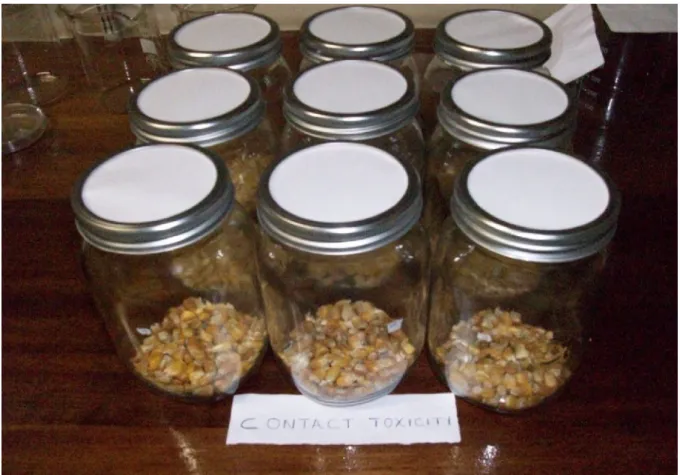
Screening of Brazilian plant extracts for antioxidant activity using the DPPH free radical method. Bioactivities of cymol and essential oils from Cupressus sempervirens and Eucalyptus saligna against Sitophilus zeamais Motschulsky and Tribolium confusumdu val.
Volatile extracts / essential oils
- Physicochemical properties of the essential oils
- Chemical composition of the volatile extracts
- Chemical composition of the volatile extracts of the fresh leaf, dry leaf and dry stem of T.camphoratus harvested in April 2010
- Chemical composition of the volatile extracts of the fresh leaf, dry leaf and dry stem of T. camphoratus harvested in April 2011
- Comparison of the chemical constituents of the essential oils of the fresh leaf, dry leaf and dry stem of T. camphoratus harvested April 2010 and in April 2011
- Chemical composition of the essential oils of the fresh leaf, dry leaf and dry stem of T. trilobus var galpinni harvested in April 2010
- Chemical composition of the essential oils of the fresh leaf, dry leaf and dry stem of T. trilobus var galpinni harvested in April 2011
- Comparison of the essential oil constituents of the fresh leaf, dry leaf and dry stem of T. trilobus var galpinni harvested April 2010 and in April 2011
- Antibacterial activities of the volatile extracts
- Antibacterial activity of the volatile extracts of the fresh leaf, dry leaf and dry stem of T. camphoratus using the agar diffusion method
- Antibacterial activity of the volatile extract of the fresh leaf of T.trilobus var galpinniusing the agar disc diffusion and minimum inhibition concentration (MIC) method
- Antioxidant activity of the volatile extracts
- DPPH radical scavenging of the leaves and stem of T. camphoratus
- Total reducing powerof the essential oils of the leaves and stem of T. camphoratus
- DPPH radical scavenging activity of the essential oil of the fresh leaves of T.trilobus var galpinni
- Insecticidal activity
- Larvicidal activity of the essential oil of the dry leaf of T.camphoratus
- Fumigation and Contact toxicity of the essential oil of the dry leaf of
- Fumigation, Contact toxicity leaf of T. trilobus var galpinni
- Cytotoxicity of the volatile extracts
- Cytotoxicityof the volatile extracts
- Cytotoxicityof the volatile extracts T. trilobus var galpinni against brine shrimps
- Cytotoxicityof the volatile extracts of
- Cytotoxicityof the volatile extracts of T. trilobus var galpinni using the MTT assay
Chemical composition of the essential oils from the fresh leaf, dry leaves and dry stems harvested in April 2010. Chemical composition of the essential oils from the fresh leaf, dry leaves and dry stems. Antibacterial activity of the volatile extracts of fresh leaves, dry leaves and dry stems.
The results for the cytotoxicity of fresh leaf (FL), dry leaf (DL) and dry essential oils. The percentages of cytotoxicity of the fresh leaf, dry leaf, and dry stem essential oils of T.
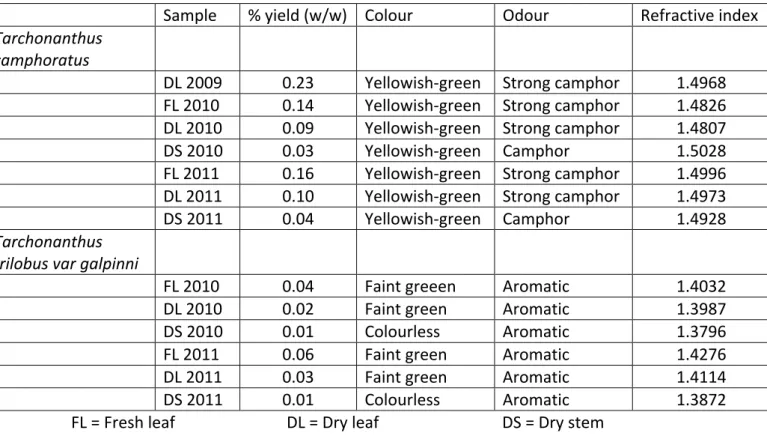
Non volatile/solvent extracts
- Chemical composition of the non volatile extracts
- Phytochemical screening of the non volatile/solvent extracts
- Chemical composition of the non volatile extracts of T. trilobus var galpinni
No tannins were found in DCM LF and DCM BK, while alkaloids, terpenoids, cardenolides and cardiac glycosides were absent from all extracts (Table 4.23). Terpenoids were detected in all extracts except DCM BK, and tannins only in DCMBK and Et Ac BK extracts. Alkaloids, saponins, cardenolides and cardiac glycosides were not detected in all extracts (Table 4.24).
Of the total number of compounds, the percentage due to fatty acid methyl esters was 18%, alkaloids 12%, phenols 12% and hydrocarbons 12%. Of the total number of compounds, phenols comprise 13%, triterpenes 10%, fatty acids 10% and fatty alcohols 6%. Hydrocarbons and phenols were found in all the leaf extracts, fatty alcohols and fatty acids were present only in methanol and dichloromethane leaf extracts and fatty acid 4.2.1.2 Chemical composition of the non-volatile extracts of T.
Hydrocarbons and triterpenes were present in all the leaf extracts while phenols and fatty acids were not present in the methanol leaf extract.

